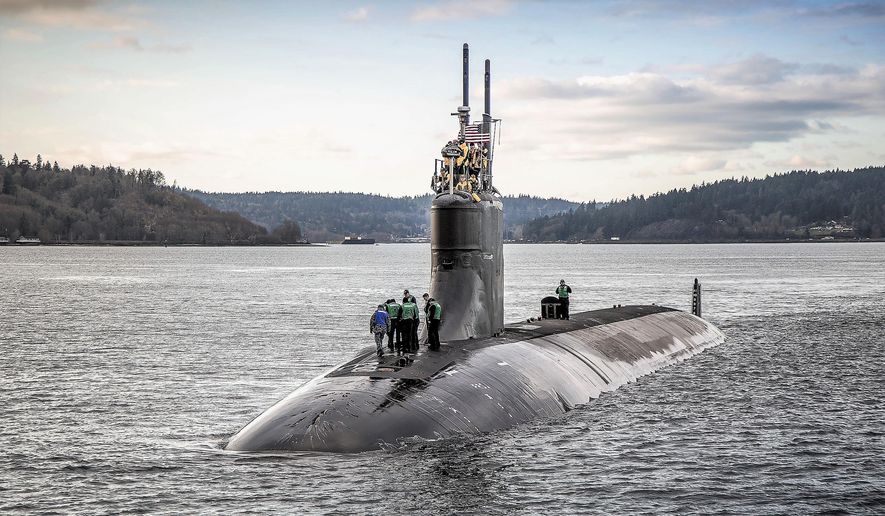The three senior leaders of a nuclear-powered U.S. Navy submarine were fired following the investigation into an underwater collision in the South China Sea, Navy officials said Thursday.
The commander, executive officer and senior enlisted sailor of the USS Connecticut were removed from their positions after the Seawolf-class fast-attack submarine struck what Navy investigators called an “uncharted seamount” Oct. 2 while operating in international waters in the Indo-Pacific region, officials said.
Vice Admiral Karl Thomas, Commander of the 7th Fleet, ordered the relief of Commander Cameron Aljilani, Lt. Cmdr. Patrick Cashin and Master Chief Cory Rodgers due to a “loss of confidence.”
The commander in his review “determined [that] sound judgment, prudent decision-making, and adherence to required procedures in navigation planning, watch team execution and risk management could have prevented the incident,” Navy officials said in a statement.
The submarine is still in Guam where the damage is being assessed. It will then return to its homeport of Bremerton, Washington, for repairs. The nuclear reactor aboard the submarine wasn’t damaged in the collision, Navy officials said, but 11 members of the crew suffered mild-to-moderate injuries.
Capt. John Witte will assume duties as the submarine’s interim commanding officer. Commander Joe Sammur will be the second-in-command while Command Master Chief Paul Walters will assume command as the senior enlisted leader, known as the chief of the boat.
China’s state-controlled media have seized on the incident, questioning what the sub was doing and accusing the Pentagon of a cover-up. A defense spokesman in Beijing said the U.S. “has the responsibility and obligation” to elaborate on the circumstances of the incident.
The collision is merely the latest in what has been a series of events intended to “stir up trouble” in the South China Sea, such as the frequent passages by U.S. Navy warships through the disputed Taiwan Straits, Senior Col. Tan Keifei told reporters in Beijing.
“We believe that the above-mentioned actions of the United States are bound to affect the navigation safety in the South China Sea, bring about serious concern and anxiety among countries along the South China Sea, and pose serious threat and risk to regional peace and stability,” he said in a statement released after the collision.
Chinese officials accused the U.S. of deliberately delaying and concealing details of the incident.
“Such irresponsible and secretive practice, lacking transparency, could easily lead to misunderstanding and miscalculation,” Col. Tan said. “China and countries around the South China Sea have no choice but to question the truth and the U.S. side’s intention.”
The U.S. sub was in its fifth month of a deployment when it collided with the seamount, the Navy Times reported. The incident follows on a string of collisions and fatal accidents that have plagued the Navy in recent years and sparked calls on Capitol Hill for reforms, including deadly collisions by the USS Fitzgerald and USS John McCain in 2017 and the 2020 arson fire that completely destroyed the USS Bonhomme Richard.
The Navy and the Marine Corps both were given “marginal” ratings in the most recent annual survey by the conservative Heritage Foundation of the military capability and readiness of the country’s military services.
• Mike Glenn can be reached at mglenn@washingtontimes.com.




Please read our comment policy before commenting.